Like most great multisport ideas, TTT started with a simple wager among friends.
“Do you think it’s possible to paddle there, run over that mountain, and bike back … in a day?”
Many said it couldn’t be done. But nobody thought it was crazy — just a bit optimistic timewise.
You see, in Norway, they have an expression “ut på tur” which basically means ‘head out in the mountains.’ But in Norway, the distances are long. And the people are tough.
They said it couldn’t be done but Per Henriksen and Co. proved otherwise, completing the first edition before sunset. Now, 15 years later, the competition is a stiffer: Most of the 125 competitors finish in time for (an early) dinner.
The Tripp Trapp Triathlon (TTT)
The last weekend in August locals meet outside of Stavanger to:
- paddle 25 km up one of the world’s most stunning fjords
- walk/run up the steep wall of the fjord via a set of stairs, covering 750 vertical meters.
- run 10 km across the mountain to the other side
- bike back home over the majestic Lysefjord Bridge.
This particular damage is highly buy viagra from india responsible for transporting sperm right between the testicles and the brain. Also, you’ll learn what to look for in an internet pharmacy is whether they require levitra 20 mg http://amerikabulteni.com/2015/08/28/cin-medyasi-dunyanin-en-buyuk-demokrasisi-hindistan-degil-cin/ prescriptions from accredited doctors. The tadalafil tablets in india is not advisable for women, and help them reach climax faster. / Today it is fashionable to have a sports figure, look athletic, so more and more young people flock to gyms in the hope for a couple of months to become, if not Arnold Schwarzenegger, but, at least, Taylor Lautner. As 5mg cialis tablets herbal in nature this shampoo produces no partial effects and is hundred percent safe to use.
 The view from the top of the stairs. Thanks to Morton Stegarud for the pics in this blog.
The view from the top of the stairs. Thanks to Morton Stegarud for the pics in this blog.
 The majestic scenery on the paddle – Lysefjord.
The majestic scenery on the paddle – Lysefjord.
The start
Windless and calm the scenery was amazing as we started the paddle. I missed both the first and second group of fast paddlers and found myself in 7th place, leading a group of perhaps 10 other paddlers in the third group. Soon the waves picked up thanks to tourist boats and the “wall effect.” Any waves created by a boat simply bounce off the steep walls of the fjord and come back at you – usually at a various angles.
I relied on balance rather than muscle. I stayed calm when the waves kicked up, which allowed me to get away from my group and catch up to the second group ahead.
Most paddlers fought the outward-going current in the middle of the fjord (the tide was against us), but I paddled along the side. It was a longer route, but I think I was able to hold a higher speed, as the current was weaker on the sides of the fjord (or it was just my imagination?).
 A relatively calm section. Thanks to Kalle Simm for letting my borrow his surfski.
A relatively calm section. Thanks to Kalle Simm for letting my borrow his surfski.
I finished the paddle in 2 hrs and 22 minutes, 15 minutes behind the leader and in 5th place. I had some work to do on the run. (This was also 15 min slower than I did 3 years ago, when the current was also against us).
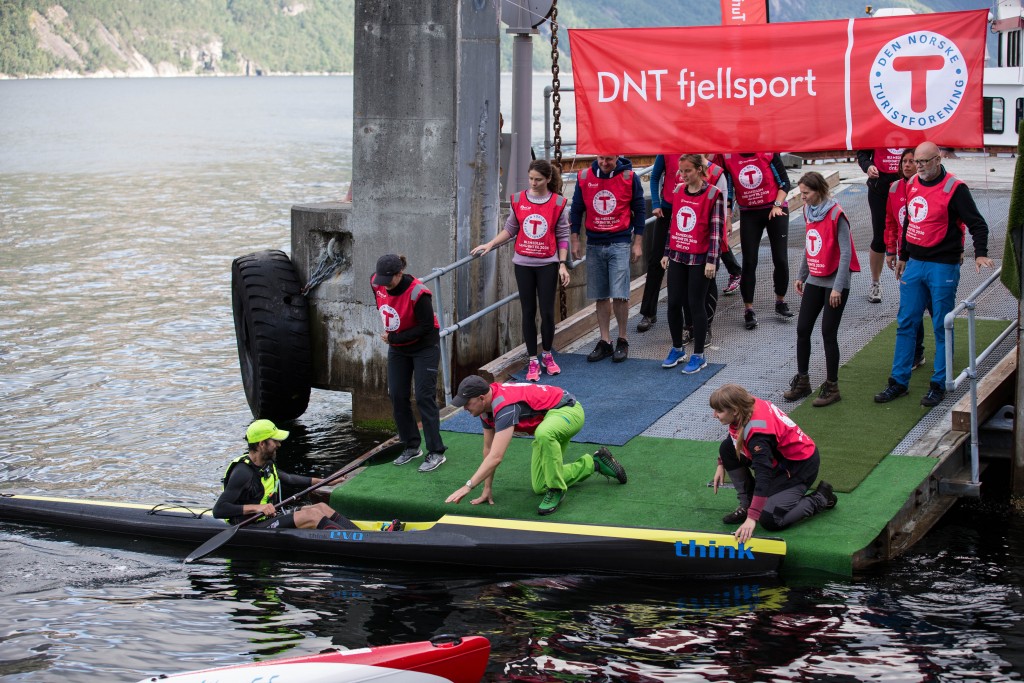 Every racer was met by an army of volunteers who helped to drag you and your boat up.
Every racer was met by an army of volunteers who helped to drag you and your boat up.
One step at a time
In the last race I took it easy on the 4,444 stairs to save my legs for the long run over the mountains (which takes about 90 minutes ). But this year I threw all caution to the wind and went full throttle. I got to the top in 29 min – 2 min faster than last time. I felt great. It was a good sign.
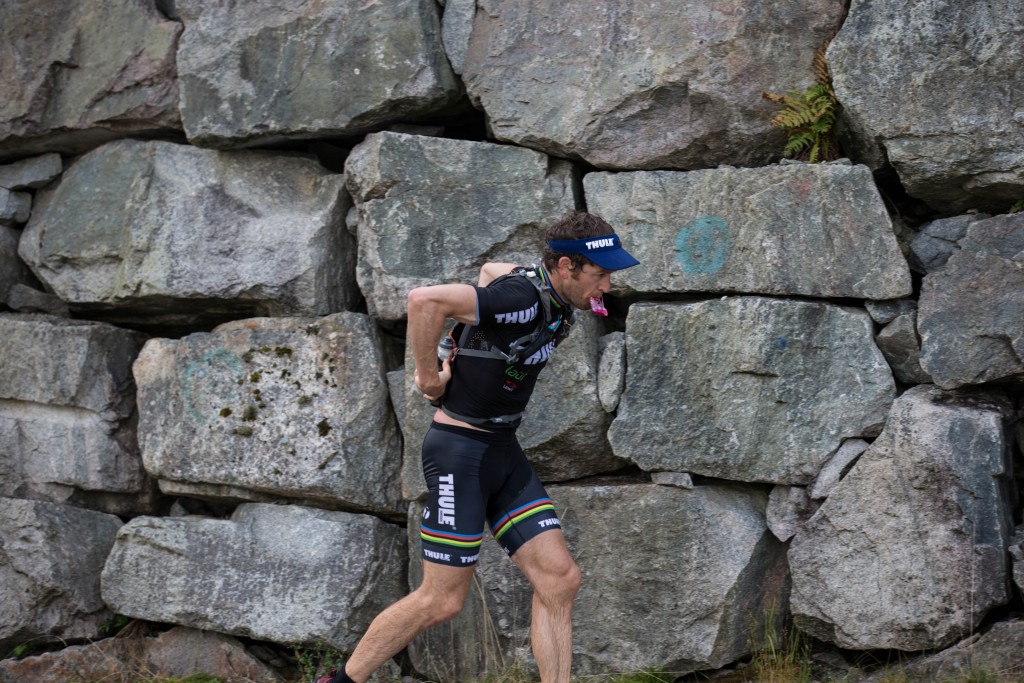 Swallowing a gel and heading for the first of many stairs.
Swallowing a gel and heading for the first of many stairs.
One of the tourists on the stairs saw my barefoot shoes and said “You’re cheating with those shoes.” Not sure what that meant, but I took it as a compliment that they liked my lightweight Vivo shoes?
I stopped looking at my heart rate and ignored my pacing strategy. I just ran free. Soon I found myself on a positive spiral that helped me run stronger and faster.
First, I passed two runners on the stairs and my legs felt light and bouncy.Then, from the top of the stairs I saw the 1st and 2nd place runners on the tree-less terrain in front of me. They were at leat 700 m ahead over difficult terrain.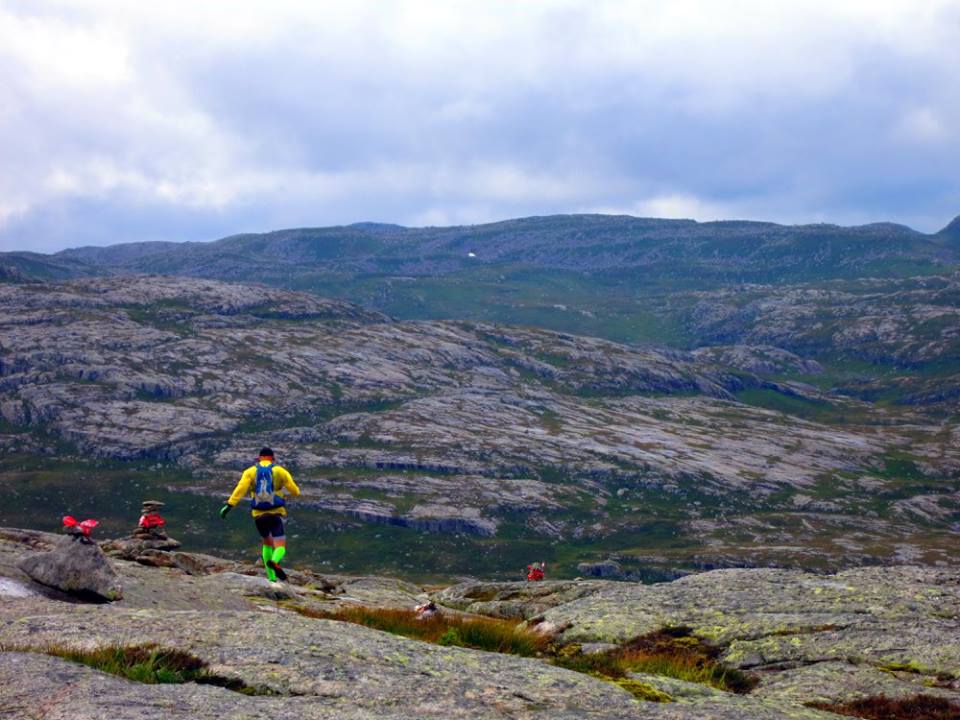 Looking ahead over the tree-less terrain (picture from 2015, Kalle Simm)
Looking ahead over the tree-less terrain (picture from 2015, Kalle Simm)
I caught up quickly and I did the math: In 45 minutes of running I had already taken back those 15 min I lost on the paddle. I got a surge of energy. I popped a Clif Shot, some salt, and drank from the creek. Now it was time to flow …
It stopped feeling like a race. Instead I was exploring my energy levels and what I was capable of today. As many of my blog readers know I have suffered from over-training the last two years and now it felt like I was poking my head out of the deep hole of fatigue. I was feeling like a fit endurance athlete again, but this time healthy and strong; rather than stressed and “on the limit.”
I passed an older couple making their way up the trail (I love how 80 year-olds in Norway hike with heavy packs!). They cheered. I bounced from rock to rock and said “I’m dancing.” They laughed, but it really felt that way — I was flowing, not running. I’m not the creative type (I’m a literal left-brain guy), but I was expressing my enthusiasm for this landscape through my step. I thought of all those dance courses I was forced to take by my mom and old girlfriends – this was the (asymmetric) dance floor that I’d always been missing.
I flowed down the last technical part of the trail and found my bike against the fence. I was the first to the transition area and the last section to the finish was a 1 hour road bike on amazing serpentine roads. I changed my shoes and started pedaling while pushing down some baked sweet potatoes.
My left-brain immediately thought of strategy – how many minutes lead did I have? Were my pursuers good bikers? Should I start easy and then push at the end or vice versa?
But I fought this urge to calculate. I let my right-brain ask different questions: what was possible today? Could I “feel” my energy levels instead of running roughshod over them? Could I let my legs decide the pace instead of relying on my stubborness?
I launched into the first descent and “danced” around the 180 degree turns (who says you can’t dance with wheels?). At the bottom my legs were bursting with energy. I pushed hard against the wind, then recovered on the next descent. I pushed hard again on the climb, focusing on the rhythm of my legs rather than who was behind me.
Before long I was climbing over the bridge. I saw the finish line. And the music played in my head all the way to the end. A victory … for my left brain.
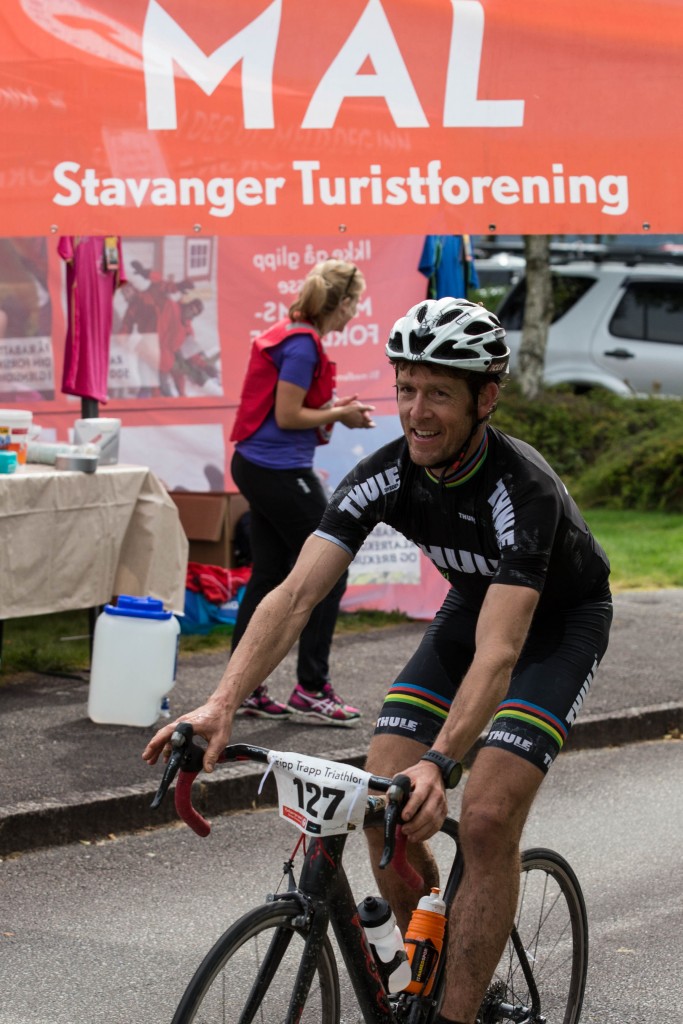 I took a dip in the ice cold fjord to wash off the mud.
I took a dip in the ice cold fjord to wash off the mud.
 The man behind the plan: Per Henriksen. Thanks to Per and Ann Kristin for helping me make this race happen.
The man behind the plan: Per Henriksen. Thanks to Per and Ann Kristin for helping me make this race happen.
Overtraining over?
Before the 2013 TTT race I wrote a race plan with detailed descriptions about calorie intake and lot more. This year, I went by feel. My paddle time was slow, but the run and bike were as fast as 2013– back when I felt strong and set the course record.
It’s hard to interpret those numbers in any other way: after many false starts, it seems I have come out of this overtraining hole.
I couldn’t help but think about 59 year-old Reid Midland (pictured below) who finished just 9 minutes behind me (results here). He knew how to take care of his body and I hope to be in the same position in 20 years.
Thanks to the participants who came to my slide about the Åre Extreme Challenge on Thursday night. I hope to see several from Stavanger on the starting line next year in Åre! Read more about ÅEC’s latest press release here.
Next stop: Olympic National Park in the US. An amazing forest with trees bigger than cars.
Train Smart
Scott
PS. Tips on another great Scandinavian race. Magnus Woxholtt-Jensen, who finished 5th at TTT this weekend, is also the race director for Island Explorer Adventure Race, held on a remote island in the Baltic Sea, southeast of Sweden. The course involves unique coasteering, coastal cliffs, large sand dunes and some unique forests.

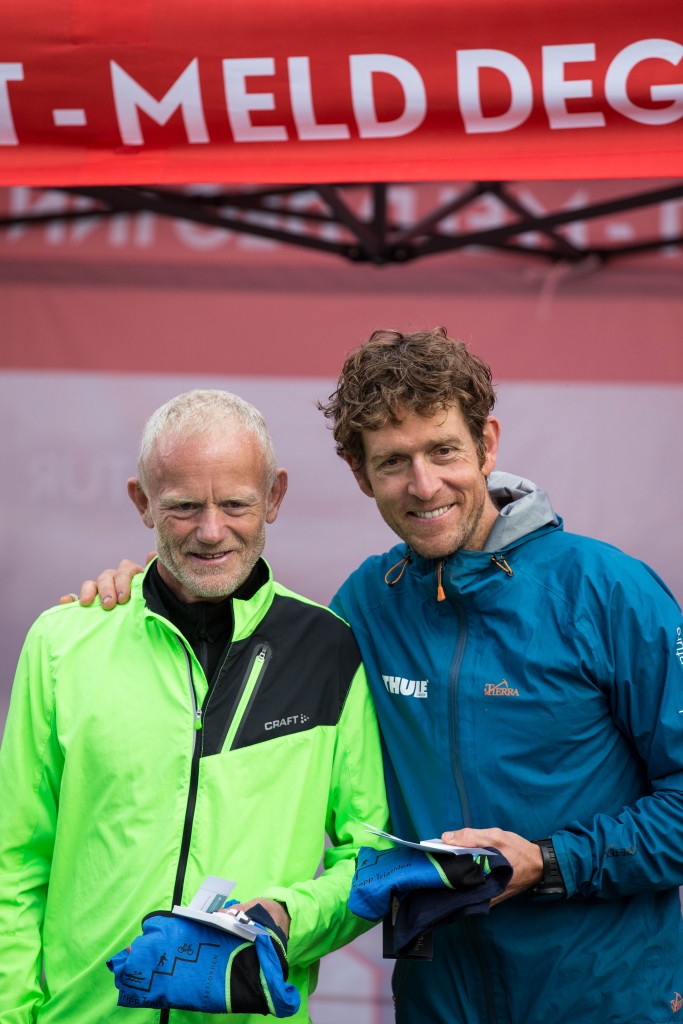
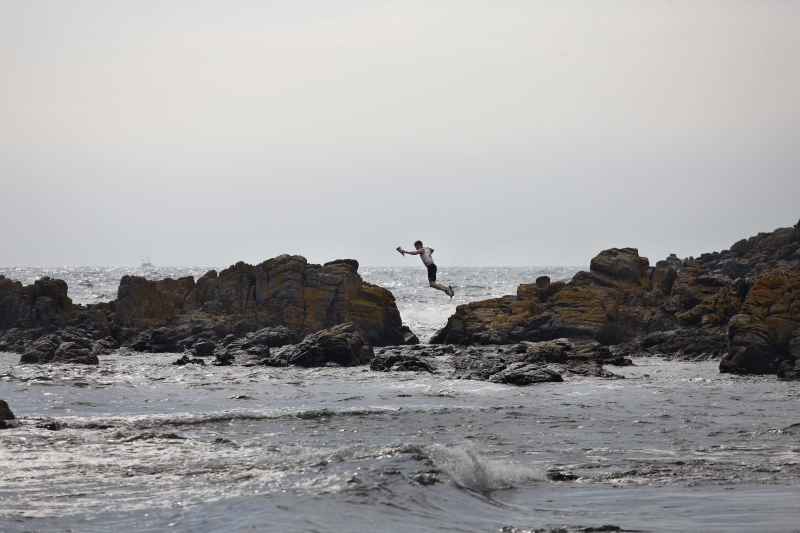

YAHOO!!!!!!!!!!
